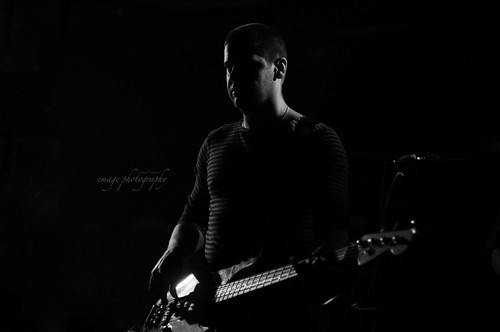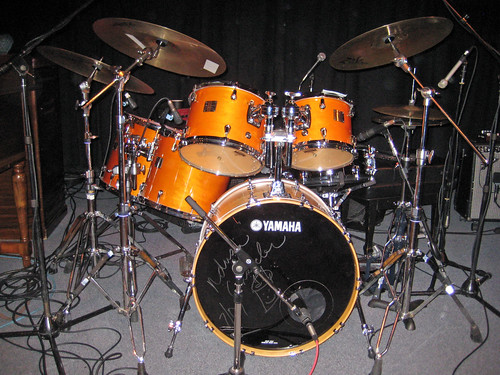
Image : http://www.flickr.com
Storytelling should be a part of every speaker's arsenal. If you listen to the best and pay close attention, you will see that many speakers incorporate stories into their message because they have a way of connecting in a way that facts cannot. Great speakers press a point with a tale that makes their message applicable to our lives. A well-told story is descriptive and takes the listener on a mental journey that is full of sights and sounds. They evoke sensory memories and help the listener to feel as if he or she were there and a part of the story.
Outsiders often think the chief was the most powerful person in an Indian tribe, but the most influential person was the storyteller. The storyteller was the verbal source of wisdom, history, literature, knowledge, moral instruction and learning. In the Native American culture story telling is used to teach, inspire and entertain. The old story tellers were often called "tricksters" because of the way they would inject valuable lessons into the message they were sharing. The people would hear the stories thinking that they were being entertained while they were actually learning through the lessons and morals of the story and its characters. These stories were indelibly etched in the collective mind of the tribe. The storyteller moved people from interest to action through the power of story. You, as a speaker, can do the same.
Stories work to teach people because they allow the listener to participate in the story from a neutral position. Have you ever tried to talk to someone about a problem, possibly some undesirable quality that they possessed? Often, the person becomes defensive - on guard because they feel they are under attack. The ears shut and the speaker's words can easily go unheard and unheeded. Stories allow the listener to hear outside of themselves, making it easier to perceive the intended message from a place of safety. Because people have a natural inclination to find the relevance of the story related to their own life, they insert themselves in the place of the characters that they relate to in the story and find a personal message.
I want to take you through one of my own experiences and show you how the principles of story telling work. I work in a highly competitive environment where there is a wide variety of cultures and ethnic backgrounds. Interoffice sharing and cooperation is not a priority. There were a series of misunderstandings between several groups to the point where "he said/she said" went beyond gossip and was threatening to erupt into disintegration of the team as a whole and possibly violence.
Any time there is a wide group of ethnic backgrounds, cultures and ages with varying perspectives and beliefs, there is always the potential for misunderstanding. People perceive things and act on their own experiences. These are often different from the perceptions of others. When the matters are personal in nature, a situation can escalate and spiral out of control quickly. To diffuse this situation, I called the group leaders together to review our common goals and general mission. I then shared the following story with them:
One morning there was a young man of the people who went to the great prairie to observe and learn from the creatures he found there. In Indian tradition we call this "still hunting" because we sit very still in whatever environment we wish to learn from and quietly observe the things around us.
This young man went to the center of the great prairie where he found a huge rock. He sat on the rock and began to watch. After a time, he saw a mouse that was running through the grass with all of the might his little legs could muster. The young man could tell that the mouse was afraid because he kept looking behind him as he ran as if something were chasing him. The young man said, "Hold on there little brother! Why are you running? What are you so afraid of?"
The mouse looked up at the young man and replied, "Are you serious? Can you not hear the war song of brother wolf?! If you had any sense you would be afraid, too, and would run with me!"
The young man decided to find this wolf and see what was going on, so he set out in search of him. It was not hard to find the wolf as he was up on a grassy hill with his head thrown back, howling for all he was worth. The young man greeted the wolf. "Brother wolf, why are you singing a war song?"
The wolf turned to look at the young man and the young man could tell that the wolf, too, was afraid. Wolf said, "I am not singing a war song but maybe I should because brother elk has been making weapons of war. I can hear him sharpening his antlers on the trees all morning."
The young man left the wolf to see what would cause the elk to do this, and off he went in search of elk. It was not long before he found elk sharpening his great antlers on a huge pine tree. He greeted the elk saying, "Aho brother elk! Why you preparing for war?"
The elk stopped his sharpening. "I am not, but maybe I should be! Have you not heard the thunder being's war drum? I have seen him strike the earth with his might drum stick and set the prairie ablaze."
"I will go to the thunder being and find out the cause for this." And off he went to find the thunder being.
He climbed a huge mountain where the rumblings of the great war drum could be heard. There he found the thunder being sitting at a drum the likes of which he had never seen. He beat this drum with a stick made of lightning and every now and then, the thunder being would touch the earth with his stick. After greeting the thunder being, the young man asked, "Why is it that you beat the war drum? Are you preparing for war?"
"This is not a war drum."
The young man began to see what was going on and called all of the creatures together for a great council meeting that was to be held on the great prairie that very night. After all were gathered and assembled in the council circle, the young man greeted them. "I was sitting on this very rock in the middle of the great prairie when brother mouse came running by, very afraid. He said brother wolf was singing a war song and this was the reason for his fear. Brother wolf, what do you say to this?
Brother wolf replied, "It is true that I was singing, but it was not a war song. I sing in this way to greet my people and to give thanks for the gifts of the day."
Next the young man told the council that brother wolf had heard brother elk making weapons of war and sharpening his great antlers on the trees. He asked elk, "What do you say to the things that brother wolf has said?"
The elk spoke. "It is true that I was sharpening my antlers but this was not in preparation for war. My antlers are like antennae that reach up to the Creator in praise and thanks for all of the many blessings that we have. I like to keep my receptors sharp and in tune."
The young man continued, "It was after this that elk told me the thunder beings were beating the war drum and setting the earth on fire with drum sticks of lightning. Thunder being, what would you say to this?"
"It is true that I was beating the great drum but it was not in preparation for war. The thunder of the drum announces the coming of the spring rains that are so necessary to things growing upon the earth. And, yes, I touch my drum stick to the earth but the fire burns away the old and dead things so that new life may come through. All of this is done in the spirit of abundance and thanksgiving for all that is given."
The young man addressed the council, "All of you were made different by the Master of Life and yet we see from today that while we are different, we are the same. Each creature gives thanks and praise in this own way as we celebrate our gifts from the Creator. Let us work from this day forward to understand one another and to be more tolerant of our differences. Let us not rush to judgment over things we don't comprehend until we can find out the meaning and true purpose."
And so it was.
...Understanding could be seen on the faces of the group leaders. Heads were either nodding in understanding or hung because they were embarrassed at what had been revealed to them through this story. It was a simple matter of showing them their role in the misunderstandings. Through story telling they could see the part they played without making them feel any more alienated than they already were. With this foundation, I could remind them of their responsibility and illuminate possible outcomes. We could either make corrections or continue to disintegrate as the story had shown.
Native Americans use symbolism and allegory in their stories that help the listener discern a deeper meaning from what they hear. The symbolism is often based on teachings and the language of an ancient tool called the Medicine Wheel. The story I used had some of this language in it and I want to show you some of it to help you see beyond the surface meaning of the story.
The story starts off, "One morning.." This is to symbolize that it is a new beginning. Just as the coming of the sun signals the coming of a new day, the "morning" says that tis is a new beginning. You will also see that the story ends with the young man calling a council meeting "that very night". This is the end of a cycle and denotes completion. Morning, mid-day, evening and night are the four phases of the daily cycle. After the characters in this story come full circle in their understanding, it is complete and balance is restored.
To the plains Indian, the great prairie represents "everyday life". So, too, does this story speak to the things that occur in everyday life. To find understanding of the things of the "great prairie", the young man went to the center. He was searching in balance and was centered in his seeking. He sat upon a "huge rock" which is to say that he was on a solid and firm foundation when he began to "look", or still hunt, the world around him.
The creatures used in the story possess certain characteristics. We look to these characteristics to guide us and give us clues to the deeper meaning in the story. The mouse is a creature that sees what is in front of his face. He is a timid and fearful creature. We know that if you have a narrow view, your perception is further clouded by the emotion of fear and that you don't see as clearly as someone who has a broader perspective and is in balance. The mouse, being so fearful, perceived the wolf's behavior as a hostile act. To the mouse everything is dangerous and is a threat.
But what about the wolf? The wolf is not as fearful as the mouse but he is a wary creature who perceived the actions of others as being potentially harmful and something to fear. You'll remember that he heard the elk "sharpening" his antlers. He saw through his window based on fear.
The elk is a creature who doesn't realize the full extent of the strength and power he possesses. This is true of many people and why the elk was used in this story.
The thunder beings speak to the things that are hard to understand through the five senses. They are the subtle forces that move unseen through our lives and yet still impact us. All of these things contribute to our perception, or lack thereof, and influence us whether we know it or not.
Emotions, misunderstandings, lack of experience - all of these things can contribute to an errant perception. They can light the fire of imbalance which can burn out of control until everything is consumed. Or, we can put the fire out. All of the creatures and their characteristics worked to fuel the situation that developed among them. This is true of the situation that was created by the people with whom I shared the story. You may now understand how difficult it would have been to show each person their character flaw and how they were contributing to the situation. Their contributions were based on misunderstanding perpetuated by their faulty perceptions and narrow viewpoints. The story accomplished this from a neutral position that did not threaten anyone's ego or pride. It allowed each person to see and correct his own actions and then work towards a shared solution.
Story telling is an effective tool and speakers are encouraged to add this tool to their repertoire. Become proficient in this age old art and your audience will remember your message long after they have heard you speak. Remember, you can move people from interest to action through the power of story.
In Spirit,
Ralph P. Brown (Tawennihake)















